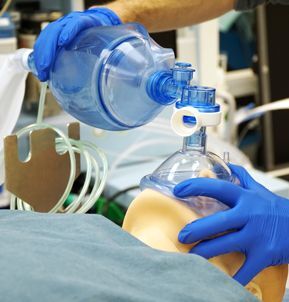Teknic’s ClearPath integrated servo motor, CPM-MCVC-3441S-RLN, provides a low-cost, reliable motor solution for a ventilator alternative from the University of Minnesota Medical School, Boston Scientific & others:
In the midst of the COVID-19 pandemic, the world was experiencing critical shortages. As hospitals ran out of ventilators, doctors were turning to anesthesia workstations, BiPAP machines, and CPAP machines to help ventilate patients. As doctors exhaustedtheir supplies of ventilators and quasi-ventilators, they were scrambling to find alternatives.
At first, the solution may seem obvious—produce more ventilators—but by the time manufacturers are able to scale up production to meet current and future demand, it would be too late.
Given that scaling up conventional ventilators will take too long, medical professionals need additional solutions. At some point, the only remaining option will be to manually ventilate patients with Ambu® bags and hope that conventional ventilators become available. Although Ambu bags are readily available, there are not enough trained clinicians (nurses, doctors, respiratory therapists, etc.) to operate these devices for every patient in need.
Opening an Ambu bag requires a clinician to actuate the bag about 10-30 times per minute without stopping—an action that quickly becomes tiring. When one clinician fatigues, a new one must take over, and this cycle must continue until the patient recovers or a ventilator becomes available.
Teknic worked on a project that automates the operation of Ambu bags (i.e. clinicians no longer need to actuate the bag—which frees up valuable resources for other tasks). As an OEM manufacturer with extensive experience working on FDA medical applications, our team was aware of many unique requirements for this application.

Project Overview:
In mid-March, a team including Dr. Stephen Richardson (an anesthesiologist at the University of Minnesota), Jim McGurran (an engineer from MGC Diagnostics), and a small group from the Earl E. Bakken Medical Devices Center conceived the idea of a one-armed robot (more technically, a single-axis linear actuator) to automate human ventilation using an Ambu bag.
“We’re trying to make it really simple, straightforward, off-the-shelf components where available, and all to make something to help these patients”
-Jim Mc Gurran, MGC Diagnostics.
When the team had an early working prototype, they contacted Teknic (on a recommendation from Digi-Key, a large electronics distributor) for advice on the project’s motion control requirements. In just over two weeks, our collective team brought the device all the way through concept, prototype, and production.
The machine, internally nicknamed “Ambu-bot” by Teknic, was not designed to replace ventilators. Rather, it was designed to automate the manual ventilation typically performed by medical personnel so that clinicians in over-stressed hospitals can treat other sick patients.

We left out sophisticated adjustments and sensors commonly found (and required) in conventional ventilators in order to drastically speed up the design, prototyping, testing, and production to meet the urgent need. The machine used one of Teknic’s ClearPathservos, but was designed for a wide range of servo or stepper motors.
While using this machine, clinicians will be required to monitor patients more closely than patients on a conventional ventilator. However, this device allows a single clinician to simultaneously monitor multiple patients, opposed to one clinician manually ventilating one patient.
“The genius of this design is in its simplicity…you will save lives with this device” -FDA
The machine does all of the required manual labor consistently and continuously, and a clinician can monitor multiple patients at the same time to ensure that each patient’s vitals (e.g., blood gases) stay in an acceptable range.
The FDA formally granted Emergency Use Authorization to Boston Scientific and the University of Minnesota, under the official name “Coventor Automatic Adult Manual Resuscitator Compressor.” Boston Scientific announced plans to initially build 3,000 units, and then more as needed.
Problems Solved:
• Be reliable and capable of running 24/7
• Have adjustable speed control
• Have adjustable compression (stroke volume)
• Be easy to build and have an open-source design
• Be ready for scaled up production (1,000 per week) in two weeks, and mass production (10,000 per week) within a few weeks after that
• Be simple in concept and universally applicable
• Be easily used by medical personnel with minimal training time
Mechanical Solution Overview:
Mechanical Solution Overview:
• NEMA 34 Motor/Drive:
• Standard BVM (“Ambu”) Manual Resuscitator Bag
• Motor-driven compression rod
• Cam-driven mechanics
• 3D-printed (or machined) gears
Video overview:
Development Timeline:
• Day 1: Initial Prototype Design
• Day 2: First Prototype Trial
• Day 4: Functional Test at the University of Minnesota
• Day 8: Project Iterations and Pre-Production
• Day 11: FDA Emergency Use Authorization Application and Production
• Day 15: Production Ramps Up and Boston Scientific Boosts Production
• Day 20: Positive Initial Review from the FDA
• Day 28: FDA Emergency Use Authorization Granted!
Project Partners:
Teknic would like to give special thanks to all of the team members who participated on this project:
• Digi-Key
